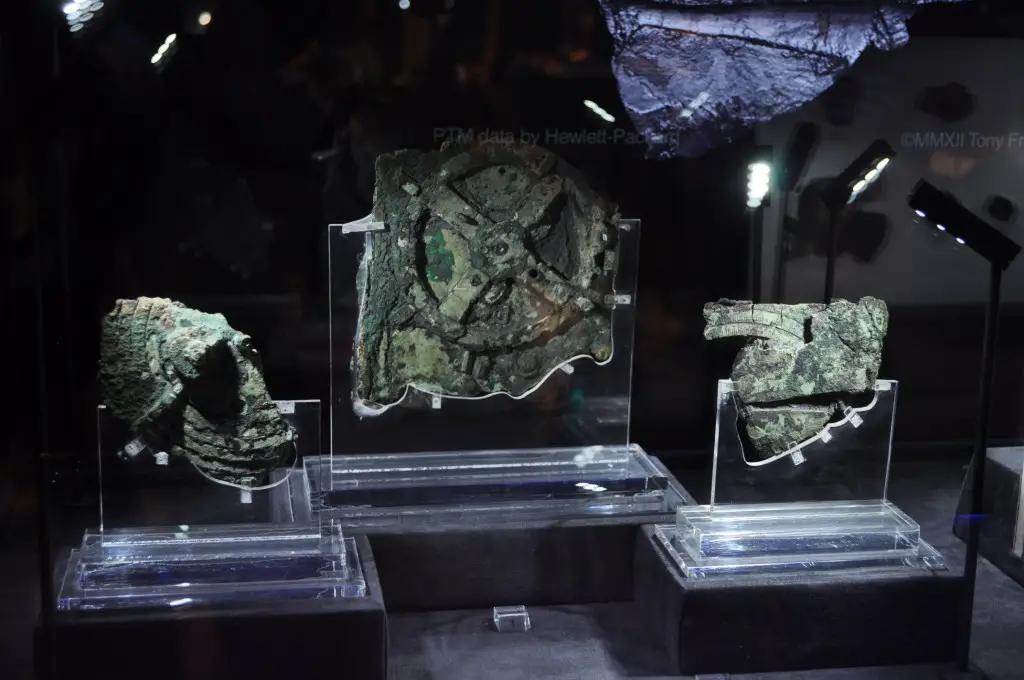Two researchers have published a paper advancing our understanding of the Antikythera Mechanism, an ancient Greek mechanism that modeled the known universe of 2,000 years ago.
The heavily encrusted, clocklike mechanism—dubbed the “world’s first computer”—was retrieved from an ancient shipwreck on the bottom of the sea off Greece in 1901.
After several years of studying the mechanism and Babylonian records of eclipses, the collaborators have pinpointed the date when the mechanism was timed to begin—205 B.C. This suggests the mechanism is 50–100 years older than most researchers in the field have thought.

The new work (published in the Archive for History of Exact Science) fills a gap in ancient scientific history by indicating that the Greeks were able to predict eclipses and engineer a highly complex machine—sometimes called the world’s first computer—at an earlier stage than believed. It also supports the idea that the eclipse prediction scheme was not based on Greek trigonometry (which was nonexistent in 205 B.C.)—but on Babylonian arithmetical methods, borrowed by the Greeks.
Far more conjecturally, this timing also makes an old story told by Cicero more plausible—that a similar mechanism was created by Archimedes and carried back to Rome by the Roman general Marcellus, after the sack of Syracuse and the death of Archimedes in 212 B.C. If the Antikythera mechanism did indeed use an eclipse predictor that worked best for a cycle starting in 205 BC, the likely origin of this machine is tantalizingly close to the lifetime of Archimedes.
Evans and Carman arrived at the 205 B.C. date using a method of elimination that they devised. Beginning with the hundreds of ways that the Antikythera’s eclipse patterns could fit Babylonian records (as reconstructed by John Steele, Brown University) the team used their system to eliminate dates successively, until they had a single possibility.
The calculations take into account lunar and solar anomalies (which result in faster or slower velocity), missing solar eclipses, lunar and solar eclipses cycles, and other astronomical phenomena. The work was particularly difficult because only about a third of the Antikythera’s eclipse predictor is preserved.
The new online paper will appear in the journal’s January 2015 hard copy edition.
PLEASE SUPPORT OUR CROWDFUNDER ON KICKSTARTER
THE-Heritage Explorer (Magazine)
Support us in launching a printed magazine that explores the history, archaeology, travel, culture and exploration of the world. Find out more
THE Heritage Explorer is an exciting print magazine and publishing business proposal dedicated to delivering you the latest exploration, travel, archaeology, culture and heritage news.
A concept born out of the aspirations of a team of journalists, archaeologists and historians to build a credible and sustainable publishing business that will not only provide the public with entertaining articles and up-to-date research, but also to develop career opportunities for all those involved.
This is not just a magazine, but the opportunity for you to plant the seeds for a real contender in the publishing market place. Find out more




